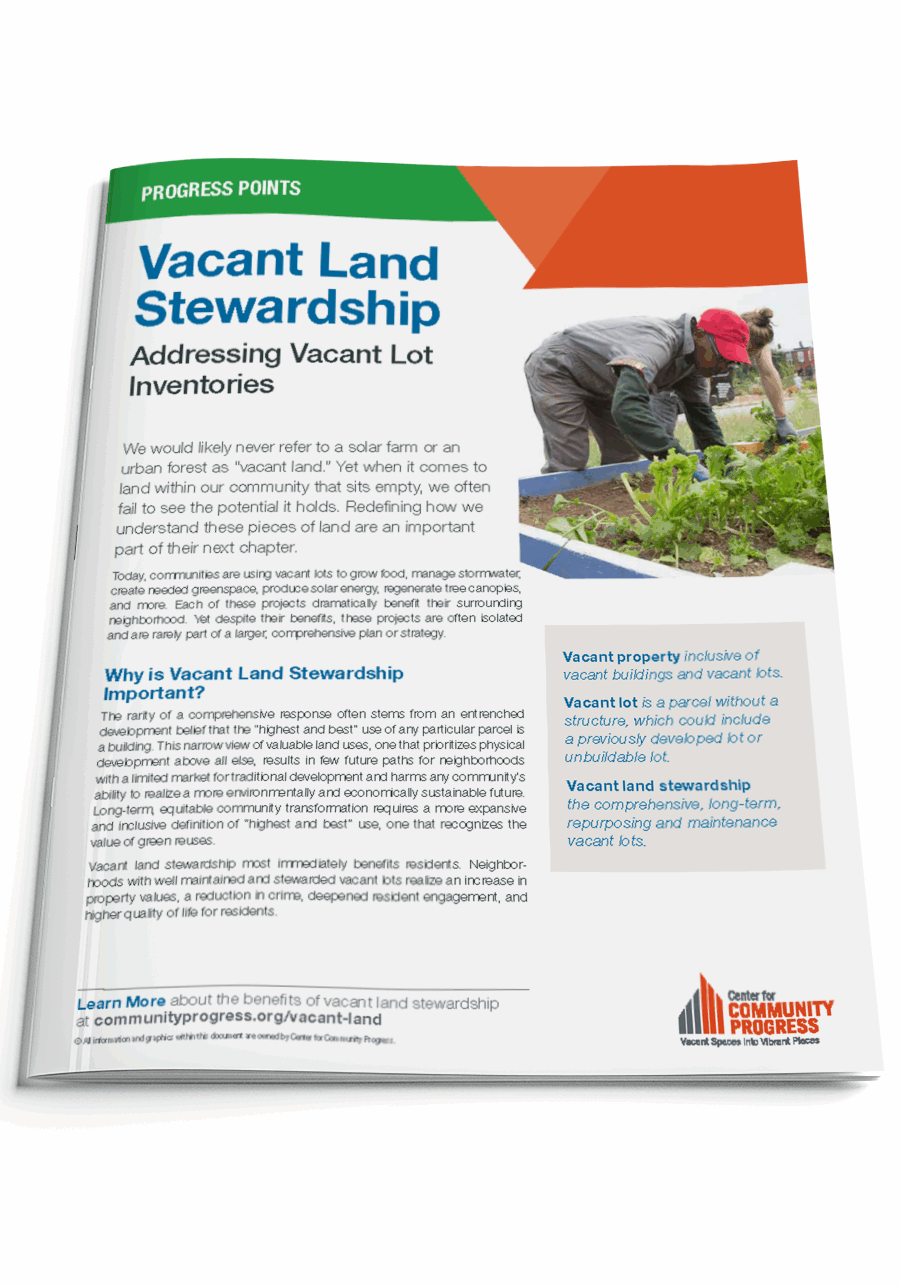Progress Points: Vacant Land Stewardship
A Brief Primer
Topic(s): Vacant Land Stewardship
Published: January 2022
Geography: United States
Author(s): Center for Community Progress
We would likely never refer to a solar farm or an urban forest as “vacant land.” Yet when it comes to land within our community that sits empty, we often fail to see the potential it holds. Redefining how we understand these pieces of land are an important part of their next chapter.
Today, communities are using vacant lots to grow food, manage stormwater, create needed greenspace, produce solar energy, regenerate tree canopies, and more. Each of these projects dramatically benefit their surrounding neighborhood. Yet despite their benefits, these projects are often isolated and are rarely part of a larger, comprehensive plan or strategy.
Why is vacant land stewardship important?
The rarity of a comprehensive response often stems from an entrenched development belief that the “highest and best” use of any particular parcel is a building. This narrow view of valuable land uses, one that prioritizes physical development above all else, results in few future paths for neighborhoods with a limited market for traditional development and harms any community’s ability to realize a more environmentally and economically sustainable future. Long-term, equitable community transformation requires a more expansive and inclusive definition of “highest and best” use, one that recognizes the value of green reuses.
Vacant land stewardship most immediately benefits residents. Neighborhoods with well maintained and stewarded vacant lots realize an increase in property values, a reduction in crime, deepened resident engagement, and higher quality of life for residents.
Nearly two thirds of organizations report the number of vacant lots in their community is growing*. As the challenge and untapped opportunity of vacant land grows, communities must identify new uses for these lots, determine how these uses can bolster a comprehensive land use strategy, and implement a long-term stewardship model.
What does successful vacant land stewardship look like?
One of the most important factors in successful vacant land management programs is understanding a community’s long-term land use vision, a neighborhood’s market context, and resident needs. As one survey respondent put it, “Make sure to follow the lead of neighbors. If they do not feel it is a priority, it probably won’t be sustainable.” That said, the possibilities are nearly limitless for vacant lots. Some of the most common categories for new uses fall into a few categories: productive uses; restorative uses; and, innovative uses.
Download and share this one-page explainer today.

Topic(s): Vacant Land Stewardship
Published: January 2022
Geography: United States
Related Publications
Other Related Content
Subscribe to join 14,000 community development leaders getting the latest resources from top experts on vacant property revitalization.
